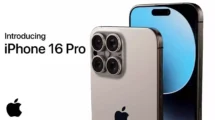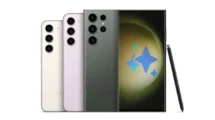Poco X2 is the company’s latest entrant in the sub-20K smartphone segment in India. And while it’s not really a successor to the Poco F1, the brand has managed to put in all the bells and whistles to maintain the Poco legacy. That said, device lands in a different series altogether and is a tad offbeat from what people have expected. For instance, unlike the F1, it isn’t boasting a flagship processor this time. Instead, the company is focusing more on design and primarily the 120Hz ‘Reality Flow’ display.
In all, the new Poco phone is now catering to a different class of buyers, in a segment that is heavily dominated by the likes of Realme and Redmi. So, is the Poco X2 good enough to be termed as the king of the mid-range segment? Or the already established players like the Realme 6 Pro, Realme X2 or the recently launched Galaxy M31 offer better value? Let’s find out.
Design and Build
All four smartphones are evenly placed when it comes to design and build quality, counting in the brilliant edge-to-edge displays upfront along with glossy rear.
Of these, both the Realme 6 Pro and Poco X2 have splash-resistant bodies, whereas, the Galaxy M31 and Realme 6 aren’t. The M31 also differs with the matte finish to its rear and is the only one to have the fingerprint sensor placed on the rear. With the other three, the same has been placed on the sides.
Furthermore, the Galaxy M31 and the Realme 6 are the lightest here with a curb weight of 191 grams while the Poco X2 is the heaviest at 208 grams. The Realme 6 Pro too measures about the same at 202 grams.
Worth noting, both the Galaxy M31 and Realme 6 feature a conventional polycarbonate back. In contrast, the Poco X2 has a Gorilla Glass 5 coated rear, followed by the Realme 6 Pro which bears a similar combination.
Display
As for the display, the Galaxy M31 has the smallest of the lot, though by marginal units. For starters, it has a 6.4-inch panel, followed by the Realme 6 and Realme 6 Pro, each at 6.5-inch and 6.6-inch, respectively. The Poco X2 has a larger 6.67-inch panel.
The M31 is the only one to offer an AMOLED display. Whereas, others including Realme 6, 6 Pro and Poco X2 flaunt IPS LCDs with high refresh rates.
Further, the M31 is the only one to have a 19.5:9 aspect ratio with a water-drop notch while the rest have 20:9 displays with punch-hole design. All the devices have similar resolutions & screen sizes, resulting in very minimal differences in pixel density. Figures are so close that it’s practically impossible for the naked human eye to find much of a difference here.
Here again, the Poco X2 and Realme 6 Pro get Corning Gorilla Glass 5 up front. The other two employ dated Gorilla Glass 3 protection.
Now, while the screens may look similar, there’s one aspect where the Poco X2 has an absolute edge over its rivals, i.e., the refresh rate. Notably, it’s the first and the only device at the moment to offer a display with a 120Hz refresh rate in its segment, followed by the Realme 6-series which offers 90Hz panels. This makes it even smoother to use and a no brainer choice for gamers.
Performance
When it comes to performance, the Poco X2 gets powered by Snapdragon 730G processor, coupled with up to 8 GB of RAM and 256GB of storage. Whereas, the Samsung Galaxy M31 uses Samsung’s in-house Exynos 9611 chipset coupled to 6 GB of RAM and up to 128GB of internal storage.
Realme 6 employs MediaTek Helio G90T processor working in tandem with up to 8 GB of RAM and 128 GB of storage. At the same time, the Pro model comes equipped with Snapdragon 720G with similar top-end configuration.
Now, all the phones have capable enough chipsets, and real-world tests have revealed not much of a perceptible difference during regular usage. The apps open reasonably quickly, and game load times are decent as well.
Anyway, the Helio G90T excels when it comes to outright raw performance but disappoints in consistency and power efficiency. The Snapdragon 720G and 730G, on the other hand, are equally good and quite proficient in gaming, counting in the flexibility and energy consumption. The Exynos lacks behind in the extreme performance lane and is not built to cater to hardcore gamers.
While gaming performance should be same on Poco X2 and Realme 6 Pro, you can expect better visuals and animations, thanks to the higher 120Hz panel.
Camera
Cameras play an equally important in what phone to opt for. Here, you’ll see a lot of similarities between the Poco X2 and the Realme 6 Pro, with both featuring a total of six cameras.
Even the camera setups are similar. The Poco X2 features a 64-megapixel primary sensor, followed by an 8-megapixel wide-angle camera and 2-megapixel macro and depth sensors. The Realme 6 Pro gets a 64-megapixel primary sensor, coupled with a 2-megapixel macro camera. However, instead of a traditional depth sensor on the Poco, it uses a 12-megapixel Telephoto lens.
As a matter of fact, the Poco X2 is using a Sony IMX 686 sensor for its primary unit, which is significantly better than the Samsung GW1 sensor used by the Realme 6 Pro.
For selfies, the 6 Pro comes with a 16-megapixel + 8-megapixel wide-angle camera setup. The Poco X2, in the meanwhile, boasts a 20-megapixel primary sensor and a 2-megapixel depth sensor.
When it comes to actual performance, the 6 Pro can be considered to have a slight edge with a telephoto lens at the rear and a wide-angle secondary selfie camera. Nonetheless, the X2 scores with the primary camera’s performance.
In comparison, the Realme 6 gets a 64-megapixel primary camera, 8-megapixel ultrawide angle lens, a 2-megapixel monochrome, and a 2-megapixel macro camera. A 16-megapixel selfie shooter follows the same. Similarly, the M31 features a 64-megapixel Samsung GW1 primary sensor with an 8-megapixel ultrawide angle lens, a 5-megapixel macro lens, and a 5-megapixel depth sensor. The front gets a 32-megapixel selfie shooter. Performance on the duo for both the front and rear cam is decent enough and should satisfy users on most occasions if not all.
Battery
The Samsung Galaxy M31 is indeed the king here with its massive 6,000mAh battery. Though, it supports mediocre 15W fast charging. The Poco X2, on the other hand, comes with a 4,500 mAh battery coupled with 27W fast charging.
The Realme 6 Pro having slightly smaller capacity at 4,300 mAh, makes up for fastest charging times with its 30W Flash Charge technology. The same applies to the Realme 6 as well, with identically sized battery and charging tech.
Price & Colour Options
The Poco X2 starts at Rs. 15,999 for the 6/64 GB model while the 6/128 GB model will set you back Rs. 16,999. The top-of-the-line 8/256 GB model maxes out at Rs. 19,999.
Being very close to the former, the Realme 6 Pro bears a price tag of Rs. 16,999 for the starting 6/64GB model and Rs. 17,999 for the 6/128 GB model. The top-end 8/128 GB is priced at Rs. 18,999. Its younger sibling, the Realme 6 costs 12,999 for 4/64GB, Rs. 14,999 for 6/64GB and Rs. 15,999 for 8/128GB variant.
The Galaxy M31 has more straightforward pricing at Rs. 15,999 for the base variant with 64 GB storage while the 128 GB variant will cost you Rs. 16,999.
As for the colour options, the Samsung Galaxy M31 is available in Ocean Blue and Space Black colour variants. The Realme 6 is available in shades of Comet Blue and Comet White while its bigger cousin, the Realme 6 Pro comes in Lightning Blue and Lightning Orange colour options. The Poco X2, in contrast, is available in Atlantis Blue, Phoenix Red, and a Matrix Purple variant.
Verdict
Truth be told, all four phones are closely matched with each having their own set of pros and cons. And it’s all on your priorities on what to go for, though none of them will disappoint.
The Galaxy M31 has an excellent battery life and a brilliant display. Whereas, the Realme 6 and Realme 6 Pro are great all-round packages delivering excellent battery life, quick charging, decent performance, and fluid 90Hz screen.
The Poco, however, delivers all or much of what the other has to offer, but at a slightly lower price point. In fact, it even leads with its 120Hz display which, when coupled with Snapdragon 730G processor, makes it a great entry-level gaming phone. Plus, it’s got some fantastic set of cameras and yet stands firm in the battery department.
So yeah, the Poxo X2 can well be considered the king of the mid-range smartphone segment in India, and rightfully so. Anyway, what’s your choice in the sub-20K segment? Do let us know in the comments below.





